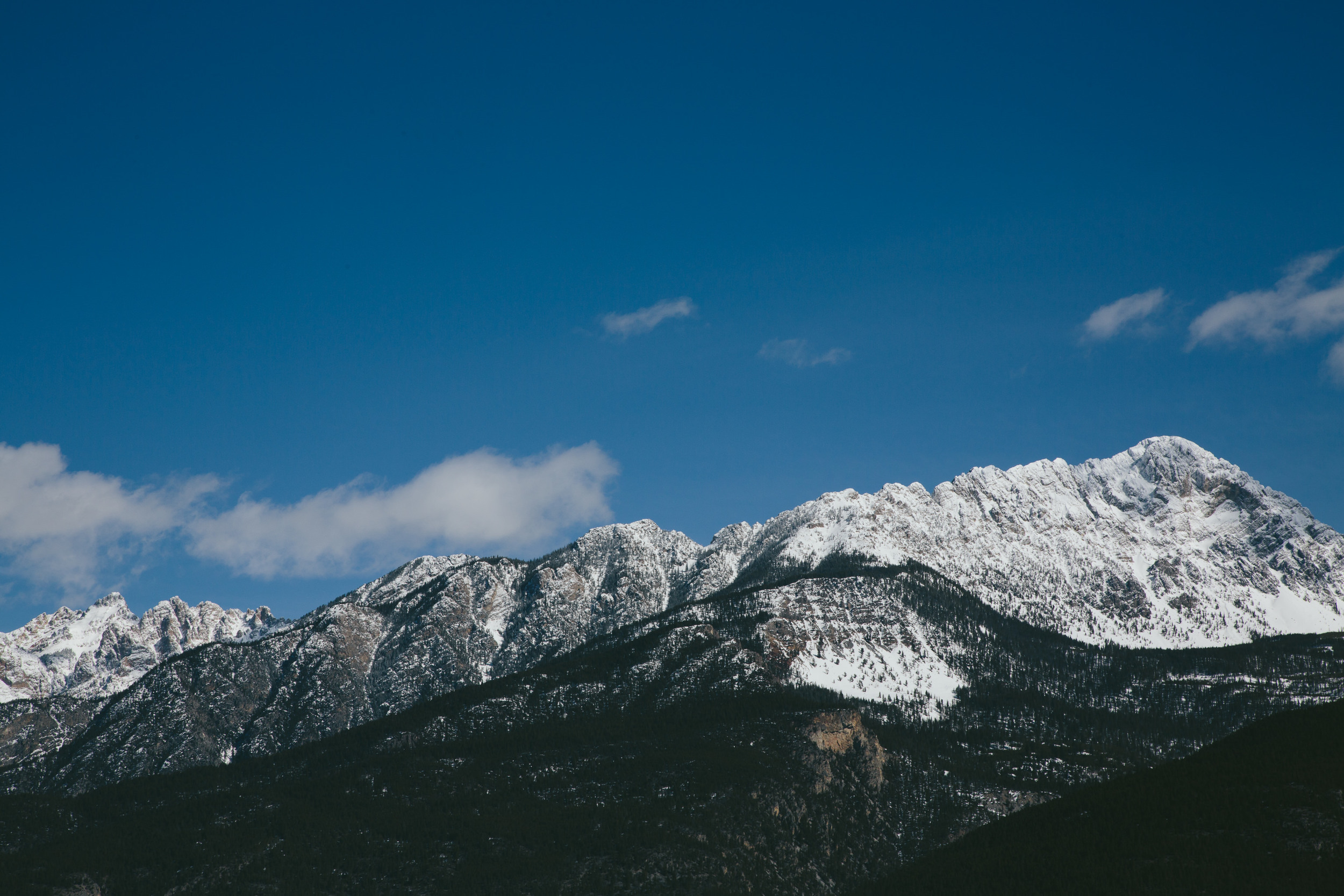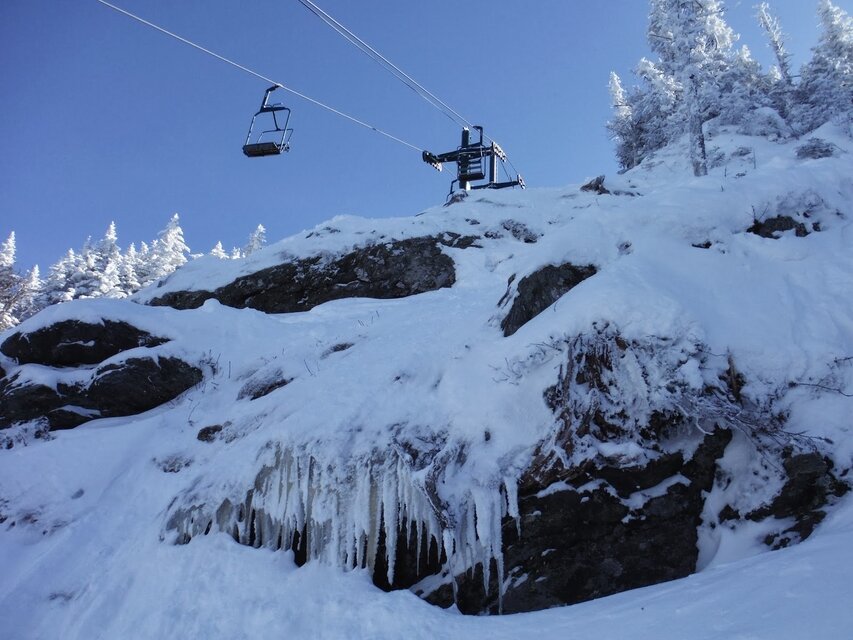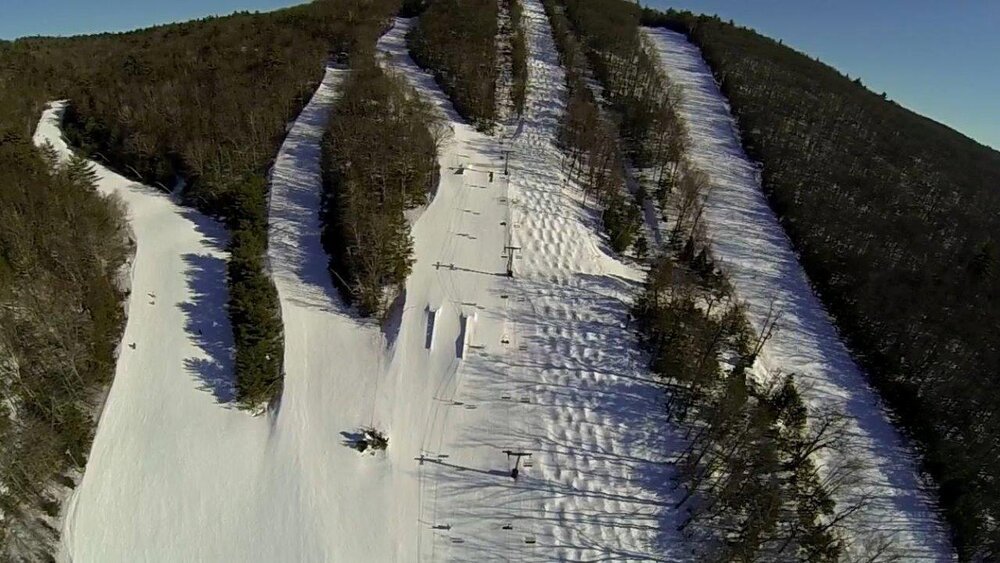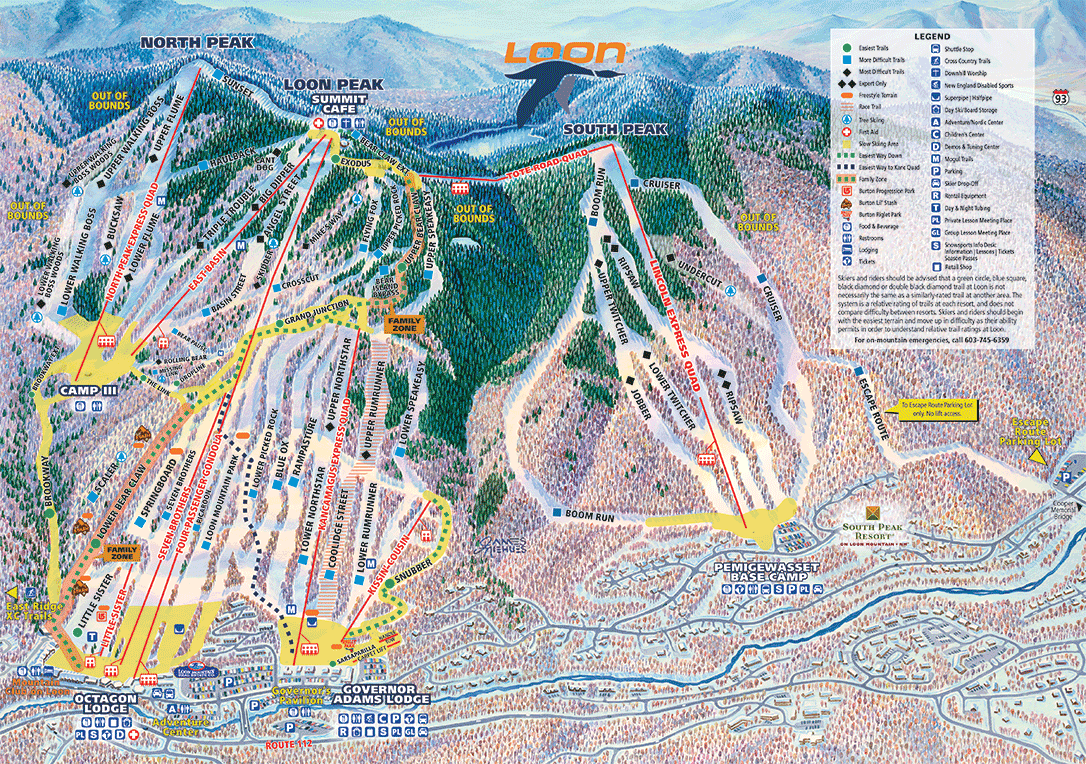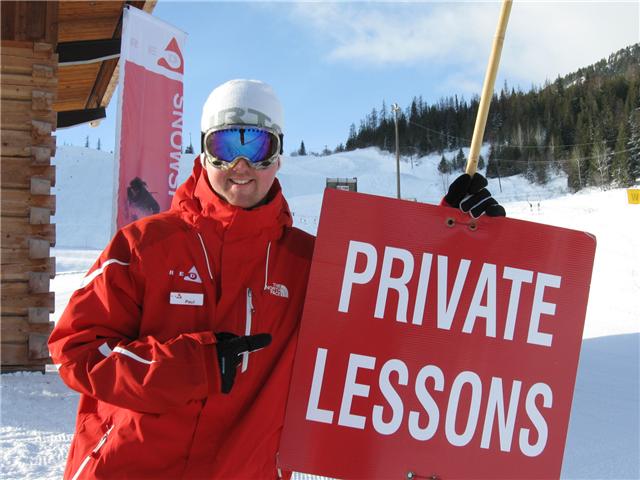Sugar Mountain is located in Banner Elk, North Carolina, which is approximately 2.5 hours northwest of North Carolina’s largest city, Charlotte. It is the south’s largest ski area with 20 ski trails. The summit of Sugar Mountain is 5,236 feet above sea level, which is higher than any lift served ski area in New York, New England and Quebec. However, the mountain boasts only 1200 vertical feet. Keep in mind, you don’t need extreme vertical to create technically great skiers, as evidenced by Buck Hill, Minnesota whose race program sent Kristina Koznik and Lindsey Vonn to the Olympics, all from 310 vertical feet. Even with the summit sitting at nearly a mile above sea level, Sugar only receives, on average, 77 inches of snow per year. However, the resort augments the natural snowfall with an impressive snowmaking arsenal that covers 100% of the skiing terrain. Sugar Mountain provides an outstanding weekend getaway for skiers of all abilities.
Whoopdeedoo is the short trail at the top right of Sugar Mountain - photo courtesy of Mark Clifford
Whoopdeedoo
Sugar Mountain is home to the only black diamond in the Tarheel state, the trail is named Whoopdeedoo. The first question many Northern’s have regarding this trail is, “Is it really deserving of a double black diamond rating?” The answer, when looking at only the steepness of the trail, is an undeniable yes. The trail has a sustained pitch of 31.21 degrees which is on par with such famous trails as Outer Limits (Killington), Stein’s Run (Sugarbush), Dynamite (Tremblant) and one of the hardest trails in Eastern North America, DJ’s Tramline. The point being, the trail is steep enough that it will give plenty of skiers pause when standing at the precipice of the trail. But, to be clear, the trail doesn’t match the difficulty of the legendary trails mentioned earlier. Whoopdeedoo is generally groomed, so it lacks the moguls of Stein’s Run and Outer Limits, the frozen waterfall of Dynamite and the boulder fields of DJ’s Tramline. In fact, the trail most similar to Whoopdeedoo is Niagara at Whiteface Mountain, which was a trail that the men caught ridiculous air off the top at the 1980 Olympics downhill. Besides the pitch, the other element of difficulty is the trail comes to an abrupt end on the Load Off trail, which is only 45 feet wide, so if you come in hot you will need to make a hard right on to the trail, otherwise you will be served up a tasty lunch of bark, cambium, heartwood and pith.
If you are in North Carolina and decide to ski Whoopdeedoo, you will need to ride the Summit Express, a six seater detachable chairlift to the top of the mountain and exit the chair to the right. To access the trail you will go past an “Experts Only” sign. It is at this point that you should attempt to score some G.N.A.R. points by getting the attention of a stranger near you and say, in a serious tone, without bursting into laughter and say. “Hey, I’m a better skier than you”. Or, even better, waive your arms and poles vigorously and yell at the top of your lungs, “I’m going to tear the crap out of this run!”. But, before doing that, be sure to take in the view from the top of Whoopdeedoo because it is exceptional.

